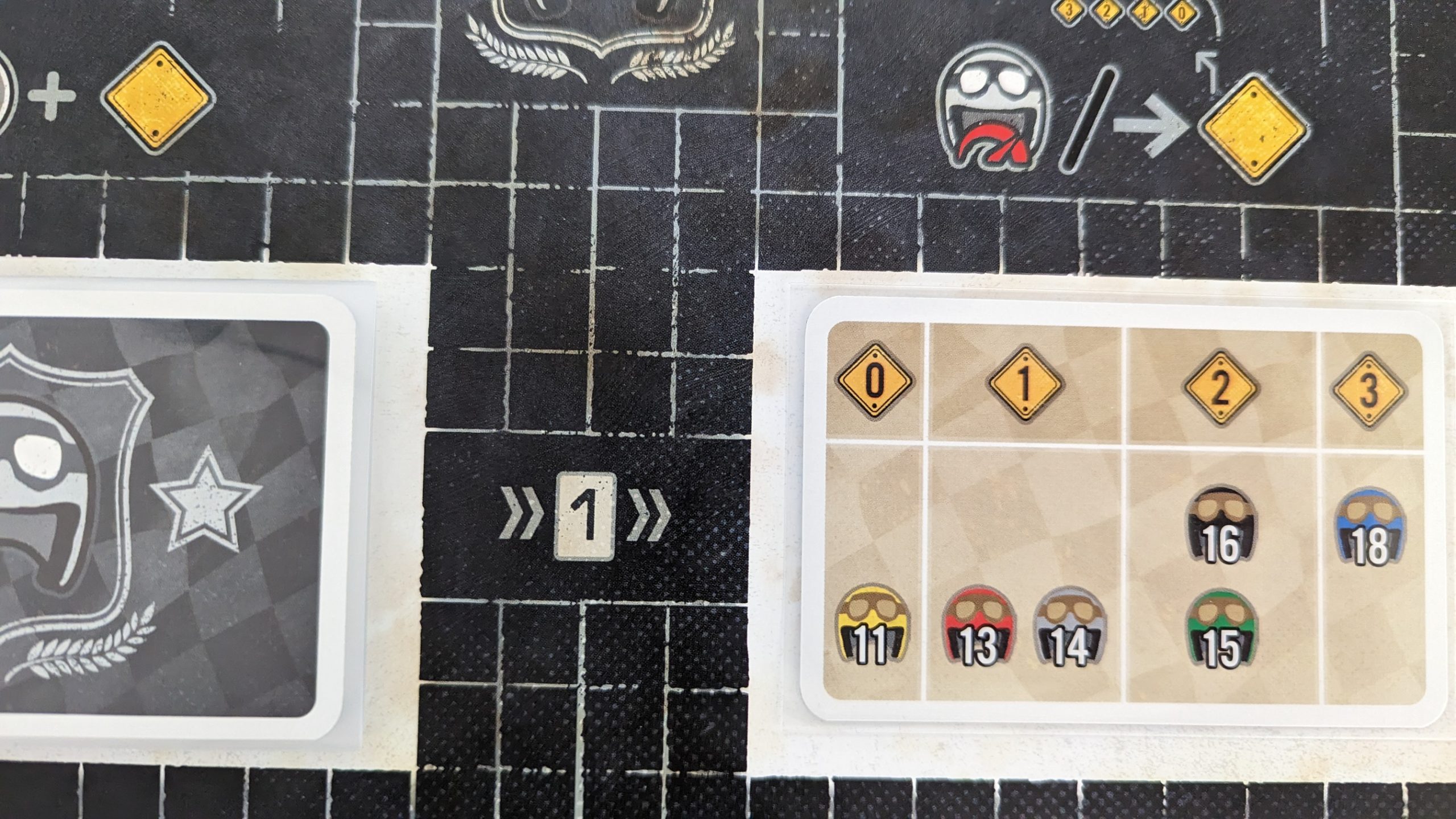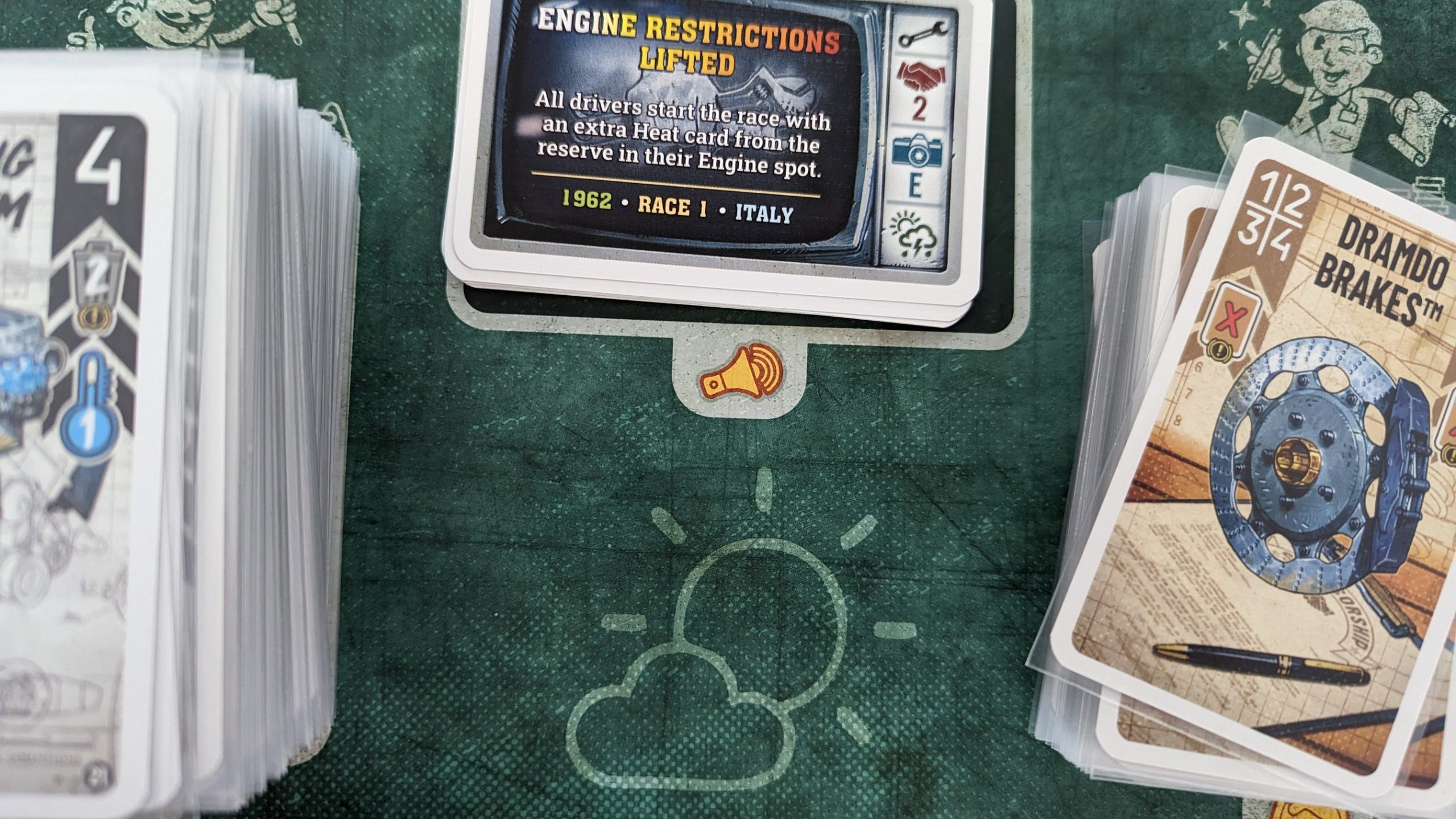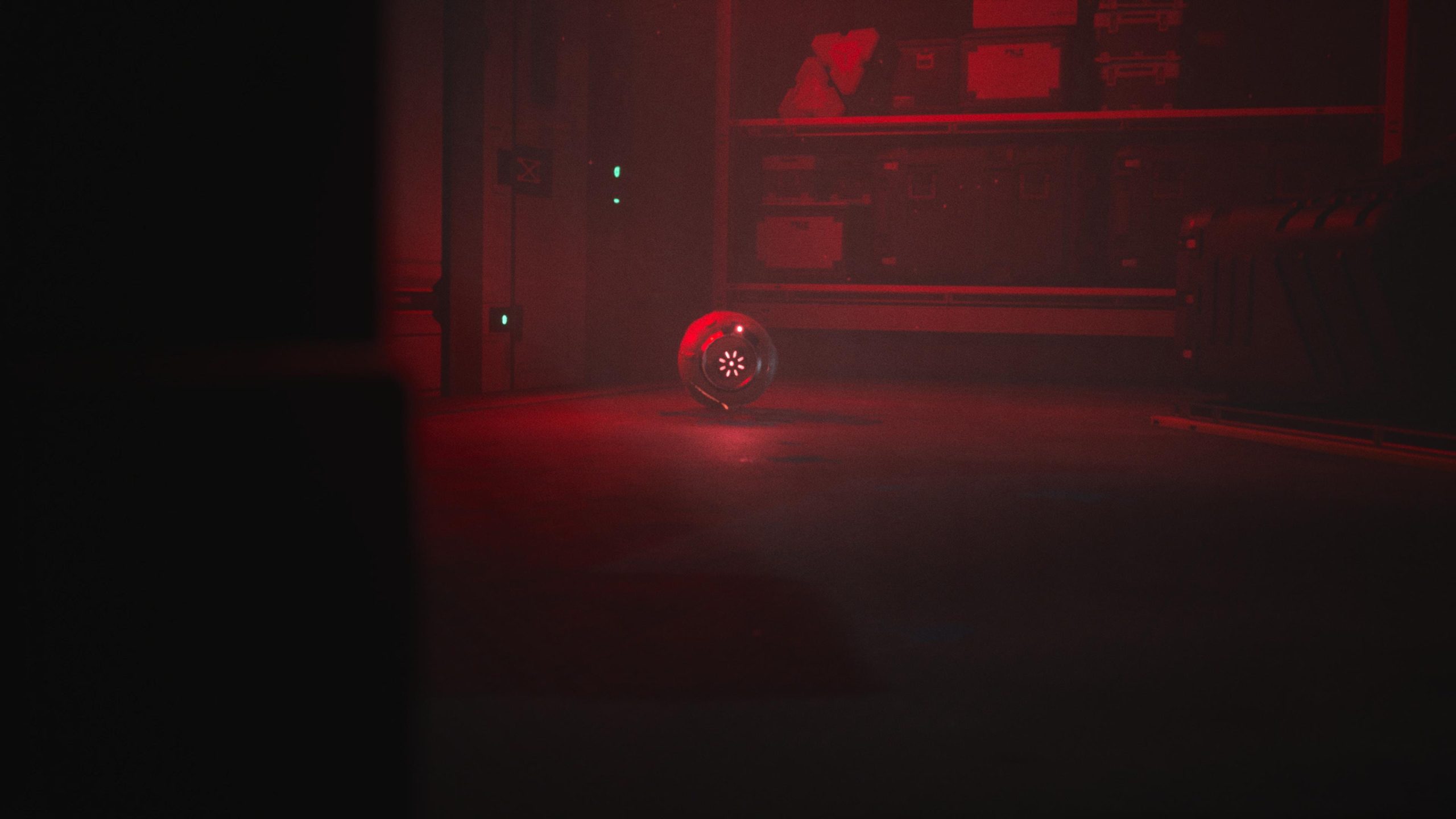Racing is a weird genre in board games. It feels as if one day in the last decade all the big names got on a conference call and agreed that racing is for filthy casuals, because, with a few noticeable exceptions, racing games have been the hobby’s red-headed stepchild. The designing duo of Asger Harding Granerud and Daniel Skjold Pedersen must have never got the memo, because in 2016 they dropped the excellent bicycle racer Flamme Rouge, and now I have the privilege of reviewing Heat, their Formula One themed spiritual successor.

Writing this review has proven somewhat strange, as Heat is a straightforward enough game, but none of its mechanics map one-to-one with hobby shorthand. So here I’m going to break from my usual review formula of intro and rules before talking about the game proper to tell you about what really sold me on Heat. As Kickstarter has brought the toy factor of huge chunks of plastic to the forefront, the subtle art of using a game’s physical presence to immerse players in the experience has been lost to arguably gauche and expensive minis. Those games sell themselves, both literally in a marketing sense, and figuratively in a gameplay sense, through their excesses, but nowhere in any of the marketing for Heat have I seen “push a little matchbox car around and switch gears with a shifting pawn.” In Heat, there’s a performative beauty in how evocative the simple action of throwing yourself into a high gear for a straightaway that I haven’t really experienced since putting on the crown in Pretty Pretty Princess.

Now that I’ve got that out of the way, let’s dive into the actual gameplay. Every round starts with players shifting into gear 1-4, which indicates how many cards they’re going to play from their hand. Once everyone’s picked their cards, they go their turns, starting with the player in the lead. The total value of cards played is how many spaces you move, simple enough. If a player doesn’t like where they would wind up, they can choose to boost by paying a heat from their engine to their discard to flip cards from the top of their deck till they hit a speed card which is added to their total movement, with all other revealed cards tossed into their discard. At the end of movement, if a player is directly behind or adjacent to another car, they can move an extra two spaces due to slipstreaming. After all movement cards are resolved, the active player can discard any cards they don’t like from their hand before drawing back up to seven for the next round. So far, what I’ve described isn’t really enough to be a game, but that’s where corners, stress, and cooling come into play. Littered throughout each of the four courses are corners, each with a speed limit. When you cross the line for a corner, you check your movement for the round, sans slipstreaming, and pay the difference in heat out of your engine if you went over. If you don’t have enough heat, you spin out, which is not worth going into the details of, but suffice to say, your chances of winning plummet if you spin out in a corner. Stress is a special pain in the ass added to your deck at the beginning of the game that can’t be discarded from your hand at the end of turn, so they’ll clog up your hand until you play them. Stress doesn’t have a value, instead every stress card is resolved by flipping cards off the top of your deck in the same fashion as a boost. While this does mean that you don’t know how fast you’ll be going, a dangerous situation if you’re approaching a corner, it also lets you skirt upcoming stress and heat cards from your deck straight to your discard, keeping you in control and leaving your options open. Heat cards work similar to stress in that they can’t be discarded, but they additionally can’t be played, meaning that if they aren’t dealt with, your hand can easily become flooded with heat. Eventually, you’ll need to throw yourself into first or second gear to get some cooling done, so you can drop the appropriate number of heat cards in your hand into your engine. In totality, you wind up with what is undeniably a racing game, but once you lift the hood, you find a system that’s all about finding the right moments. The spot where you can drop into first gear and fill your engine up with heat, or the right time where you can afford to abandon the advantages of slipstreaming and pull away from the pack.

Which means yeah, the base experience of Heat is pretty good, but let me tell you about the cherry on top known as modules. The weather module is understated, simply modifying your starting heat and stress, along with tweaking some corners and fussing with some straightaways, but it dramatically changes how courses are played. After a couple races in Britain, I knew that the trick was properly managing your heat and discarding otherwise great speed cards so you can take the double corner in one turn. Do that for two laps, and you’ve guaranteed that you’re going to demolish anyone who hasn’t. But then I tossed in weather, which lowered the speed and then added the heat punishment for both of the involved corners, and suddenly the course I had figured out was unknown again. The garage module adds a miniature draft of upgrade cards to the beginning of the game. Body cards let you discard stress cards, allowing you to ignore the randomness inherent in playing them. Cooling systems let you cool without having to drop into a low gear, and extra heat is just that-nothing too splashy, but just one more of that all-important resource can mean the difference between skipping a gear to go straight into fourth out of a corner and being stuck in second. The garage deck is huge, so I’m not going to explain every card, but in essence, you wind up with a deck that feels uniquely yours, allowing you to play to your strengths while shoring up your weaknesses. Legends is just alright, a deck of cards that will run dummy cars if you don’t have the ideal 4+ players, but honestly it really doesn’t measure up to having real humans behind the wheel. My personal favorite is the championship module. There’s frills here, don’t get me wrong, but the actually important thing about championships is simply stringing races together, with twofold benefits. The first, and most obvious, is that you actually have a reason to care about how people finish other than giving Mike shit for losing yet another game in embarrassing fashion. The second, and more important, is that with a larger sample size, the law of averages is more likely to kick in, and that low roll draw that killed you in one race is probably not going to happen again. Also, you’ve played more, so that one bad beat isn’t going to define your play experience.

Now, if you’d indulge me, I’d like to conclude with a brief aside about whether Heat or Flamme Rouge is the game for you. Honestly, it really comes down to how much you enjoy what we in the hobby call “bullshit.” When I drop a four and three stress cards and pull three fours while dumping heat and stress into my discard, I’d correctly call that skill, as I had kept track of my cards and knew that that was the most likely outcome, but when you do the same and hit all ones while drawing up a hand of heat for next turn, you’d be totally justified in telling me to go to hell. It’s why I love Heat, but if that isn’t for you, Flamme Rouge should be the one you pick up.

Heat is like if someone tossed all my favorite elements from push-your-luck and deck management into a blender. The end result isn't for everyone, but if you're willing to accept a lack of control, it's a great ride.
PROS
- You get a little gear shift pawn
- Perfect blend of luck and skill
- Modules make the game adaptable to the player group
CONS
- Too swingy for some
- The order of effect resolution will trip some players up the first time they dip into the advanced garage
Nick grew up reading fantasy novels and board game rules for fun, so he accepted he was a dork at an early age. When he's not busy researching the intricacies of a hobby he'll never pick up, Nick can be caught attempting to either cook an edible meal or befriend local crows.
See below for our list of partners and affiliates:

 1 year ago
191
1 year ago
191







